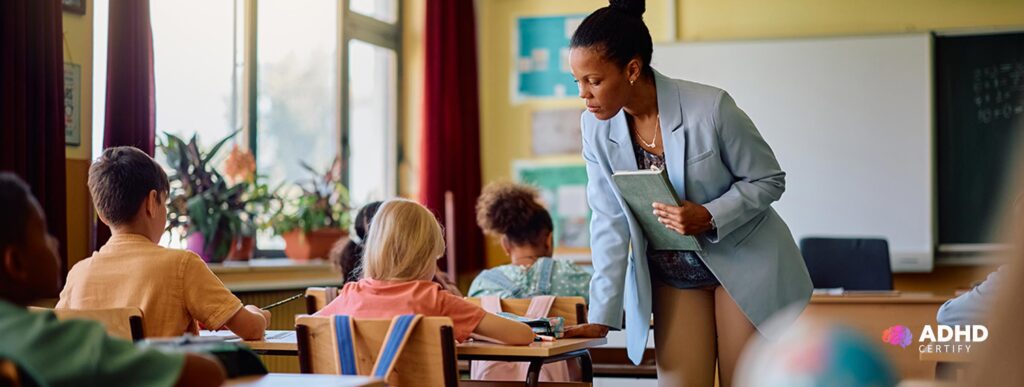When learning feels harder than it should, when focus slips, written work is messy, or reading and maths never quite click; it’s important to understand that these challenges are often linked to underlying conditions, not a lack of effort.
ADHD and learning disabilities often overlap, creating challenges that are as frustrating as they are misunderstood.
This overlap is more common than many realise.
People living with ADHD may also face issues like dyslexia, compounding everyday academic struggles and affecting confidence, organisation, and progress.
It’s not just about attention; it’s about how the brain handles information.
Whether you’re supporting a student, managing an ADHD diagnosis yourself, or trying to understand what’s getting in the way of learning, clarity matters. This blog explores the connection between ADHD and learning disabilities and offers practical routes to support, from early identification to personalised tools that can make a real difference.
What’s the Link Between ADHD and Learning Disabilities?
Let’s look at how often ADHD and learning disabilities overlap, and why this combination matters.
How Common Is the Overlap?
It’s surprisingly common. Around 30 to 45% of people diagnosed with ADHD and learning disabilities experience both, often first noticed in school or during workplace training. The signs can be subtle at first, including distractibility, difficulty reading, poor handwriting, but together they create a clearer picture.
You can read more about ADHD in our blog ADHD Brain Explained: Myths, Facts, and Surprising Discoveries.
Why Do These Conditions Often Coexist?
Both ADHD and learning disabilities affect how the brain handles information. They share traits like poor focus, working memory issues, and trouble with language. That’s why the signs of dyslexia and ADHD often overlap, even though they are separate conditions.
How Does the Combination Affect Learning and Functioning?
When these conditions appear together, they often reinforce one another. Someone with ADHD and dyslexia, for instance, might struggle to stay focused while also finding reading unusually hard.
Others face ADHD and writing difficulties or ADHD and math difficulties, leading to frustration and persistent academic struggles.
The key is recognising that the mix of symptoms isn’t behavioural, it’s neurological. Identifying the overlap early makes it easier to offer the right support and close the learning gap.
Which Learning Disabilities Commonly Occur With ADHD?
Here’s how conditions like dyslexia, dyscalculia, and dysgraphia interact with ADHD, and what to look out for.
ADHD and Dyslexia
Dyslexia affects how a person reads and interprets language.
When ADHD and dyslexia occur together, the result is often a child who can’t concentrate on decoding words and also struggles with recognising them in the first place. Signs of dyslexia and ADHD can overlap, such as trouble focusing during reading tasks or difficulty retaining what’s just been read, but each requires its own support approach.
A combined diagnosis calls for layered interventions: structured literacy for dyslexia and focus-boosting strategies for ADHD.
ADHD and Dyscalculia
Dyscalculia makes understanding numbers and mathematical concepts difficult.
Children with both ADHD and dyscalculia may lose focus during maths lessons and also find basic number operations confusing. ADHD adds impulsivity and distractibility to an already tough subject. These students often fall behind early and can develop long-term anxiety about maths.
It’s important to distinguish between ADHD-related inattention and true maths learning difficulties in order to offer the right help.
ADHD and Dysgraphia
Dysgraphia affects handwriting, spelling, and the ability to organise thoughts in writing.
When combined with ADHD, the result can be significant writing difficulties, including messy handwriting, poor spelling, and disorganised written expression. ADHD and writing difficulties often get misinterpreted as laziness or lack of effort, when in fact they’re a neurological hurdle.
Support needs to cover both the motor and cognitive aspects of writing, from using typing tools to offering step-by-step writing frameworks.
These overlaps aren’t exclusive to ADHD. Autism and learning disabilities also commonly occur together, often in different ways.
How Do These Comorbidities Affect Academic Performance?
Students facing ADHD and learning disabilities often struggle with written expression, marked by poor handwriting, spelling errors, and difficulty structuring sentences.
Weak executive function and organisation make planning, remembering instructions, and managing time a daily battle.
These issues spill into ADHD and homework struggles, turning assignments into sources of stress and undermining confidence, fueling broader ADHD and academic struggles.
A 2024 report reveals that over 1.7 million pupils in England receive SEND support, with 5.3 % on EHC plans, the legal framework that often supports students with ADHD and co-occurring conditions.
How Can Schools Support Students with ADHD and Learning Disabilities?
UK schools are required to provide SEND support, ranging from classroom adaptations to EHC plans, through a clear legal framework. Effective classroom strategies include chunking tasks, using visual prompts, and offering extra writing support.
IEPs or EHC plans bring personalised goals, dedicated resources, and regular reviews. Best practices for communication with parents include keeping families updated on adjustments and progress and inviting their input.
Parents searching for the best schools for ADHD and learning disabilities UK should consider settings that hold EHC plans, train staff in SEND, and work closely with families to create inclusive environments.
What Educational Accommodations Make a Difference?
Targeted accommodations can dramatically improve outcomes for students with ADHD and learning disabilities.
- Simple adjustments like time extensions and testing adjustments help ease pressure during exams, allowing students to demonstrate what they know without being penalised for slower reading or planning.
- Alternative formats and assistive technology and for ADHD are increasingly essential. Text-to-speech tools, dictation software, and audiobooks support students with ADHD and dyslexia, reducing frustration in reading-heavy subjects. Visual aids, colour-coded notes, and keyboard-based writing also help bypass ADHD and writing difficulties, giving students fairer access to the curriculum.
- Support for behaviour and emotions is just as critical. Behaviour support and emotional coaching, including mentoring, access to calm spaces, or check-ins with pastoral staff, help students with ADHD and academic struggles regulate emotions, improve focus, and reduce classroom disruptions.
These adjustments don’t just level the playing field; they make education genuinely accessible.
“Working in partnership with the SENCO in school with a plan in place has made such a difference to my child’s school experience. Their needs are better understood, and the right support is now in place to help them thrive. It’s reassuring to know we’re all working together with the same goal helping my child feel confident, included, and capable.”
How Can Families and Educators Work Together Effectively?
Collaboration between home and school is one of the most powerful tools for supporting students with ADHD and learning disabilities. A regular review of support plans, whether through EHCP meetings or informal check-ins, ensures strategies stay relevant and reflect the student’s changing needs.
Aligning home and school strategies, such as using the same visual schedules, behaviour charts, or homework routines helps create consistency. This is particularly useful for students dealing with ADHD and homework struggles, where structured, predictable environments lead to better outcomes.
Finally, encouraging child self-advocacy builds long-term resilience. Teaching students to speak up about what helps them learn best not only boosts confidence but prepares them for secondary school, further education, or employment.
The earlier families and teachers model this collaborative approach, the more equipped the student will be to take ownership of their learning journey.
Where Can You Find Support and Resources in the UK?
For families dealing with ADHD and learning disabilities, access to the right resources is essential. National charities like the ADHD Foundation and YoungMinds offer guides, webinars, and community support, while online forums such as r/ADHD connects people with shared experiences.
Professional help is equally important. ADHD coaches, tutors, and therapists can offer tailored strategies for focus, emotional regulation, and academic progress. Some specialise in coexisting needs like ADHD and dyslexia, providing targeted learning support.
If you’re unsure where to begin, knowing how to get an ADHD assessment for a child in the UK is crucial. The NHS provides assessments through CAMHS, though waiting times can be long. Private assessments offer faster results, often within weeks.
For a quick starting point, try our Free ADHD self-assessment.
What Treatment Approaches Are Most Effective?
Managing ADHD and learning disabilities usually works best through multimodal plans, a combination of education support, therapeutic input, and sometimes medication. No single method covers everything, but together, these elements can help improve focus, mood, and learning outcomes.
CBT (Cognitive Behavioural Therapy) plays a major role in managing coexisting conditions. It helps build coping strategies, especially around organisation, low self-esteem, and social challenges that often come with ADHD and academic struggles.
Early intervention matters, and not just for academic success, but for emotional wellbeing and long-term independence. The earlier support begins, the more chance a student has to close learning gaps and build skills with confidence.
Final Thoughts
Living life with ADHD and learning disabilities isn’t about fixing what’s broken, it’s about understanding how someone learns best and making space for that.
With awareness, structure, and the right support, meaningful progress is not just possible’ it’s expected.
If you suspect ADHD might be part of the picture, getting clarity is the first step. At ADHD Certify, we offer a Free Online Screening designed to help you understand whether further assessment may be worth exploring.
It’s quick, private, and can give you the confidence to move forward.
Whether you’re a parent, teacher, or someone seeking answers for yourself, know this: you’re not alone. Support exists, and you don’t have to figure it all out in isolation.
What matters is finding what works, and sticking with it.
Frequently Asked Questions
What is overlapping of disorders called?
When two or more conditions are present in the same person, it’s called comorbidity. In ADHD, this often includes a learning disability such as dyslexia, or another condition like autism. These combinations are common and make it especially important to understand how the conditions interact.
What is the difference between ADHD and a learning disability?
ADHD affects attention, impulse control, and focus. A learning disability affects how someone processes specific academic tasks like reading, writing, or maths. ADHD influences how a person engages with their environment, while learning disabilities impact how they understand and work with information. They can exist independently, but often appear together.
Why do ADHD and autism overlap?
ADHD and autism are separate conditions, but they often co-occur because they involve similar areas of brain function, such as attention, sensory processing, and social behaviour. Genetic and developmental factors contribute to this overlap. It’s common for individuals to meet the criteria for both, even if one is more prominent.
Are ADHD and learning disabilities treated the same way?
No. ADHD is often treated with behavioural strategies, therapy, and sometimes medication. Learning disabilities are usually supported through educational interventions tailored to the specific area of difficulty. If both are present, a combined approach works best, addressing attention and learning needs together.
Can adults have ADHD and learning disabilities too?
Yes. These conditions continue into adulthood, though they may look different. Adults may find tasks like organising paperwork, following instructions, or reading fluently more difficult than expected. Many only receive a diagnosis later in life, and targeted support can still have a meaningful impact.




